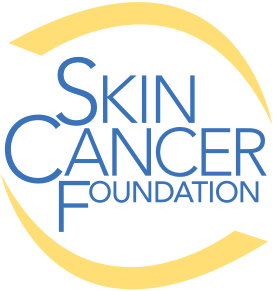Got sun protection questions? Anna L. Chien, MD, Associate Professor of Dermatology at Johns Hopkins University School of Medicine and member of our Photobiology Committee, which sets the standards for our Seal of Recommendation program, is here to provide you with evidence-based answers you can trust, to help you prevent sun damage that can lead to skin cancer.
Q: What is UPF and how is it different than SPF?
Dr. Anna L. Chien: Patients ask me this question all the time, and it’s such an important distinction. UPF (Ultraviolet Protection Factor) indicates a garment’s ability to protect your skin from the sun’s ultraviolet (UV) rays, based on how much UV radiation (both UVB and UVA) it allows to reach your skin. A UPF of 30 to 49 offers very good protection, while UPF 50+ offers excellent protection. The Skin Cancer Foundation’s Seal of Recommendation for sun-protective fabrics requires a minimum UPF of 50, which blocks 98 percent of the sun’s rays and allows only 2 percent to penetrate. Another important thing to consider when searching for sun-protective clothing with good UPF protection is how much skin it covers. The more skin you cover, the better. Don’t forget that this includes your head! A hat with a 3-inch brim protects the top of your scalp, ears and face.
On the other hand, SPF (Sun Protection Factor) tells you how long it can take for the sun’s UVB rays to redden your skin if you apply sunscreen exactly as directed, compared with the amount of time it would typically take for your skin to burn without sunscreen. The Skin Cancer Foundation’s Photobiology Committee recommends using sunscreen with SPF 30+ for incidental sun exposure (such as brief outdoor exposure while commuting to work, walking your dog, or even while inside sitting in front of a window). This means that it typically would take 30 times longer for your skin to burn when protected with this sunscreen than with unprotected UV exposure.
SPF and UPF are both important when building a daily sun protection regimen.
Q: I’m a runner. What can I do to protect my skin from UV damage after sweating during long runs and races?
Dr. Chien: Good for you for incorporating exercise into your lifestyle! Runners and other outdoor athletes spend long periods of time out in the sun and experience significant UV exposure. Unprotected sun exposure is dangerous, because the harmful effects of the sun’s UV rays can cause skin damage, which can lead to premature aging and skin cancer. In fact, about 90 percent of nonmelanoma skin cancers are associated with exposure to ultraviolet radiation from the sun. This is why it’s important to maintain a sun protection routine before and during your runs. When engaging in outdoor activity for extended periods of time, the Photobiology Committee recommends applying broad-spectrum, water-resistant sunscreen with an SPF 50+ to all skin not covered by clothing. Don’t forget, if you’re enjoying a long fitness session — like long-distance training — you’ll need to reapply your sunscreen every two hours or after swimming or sweating.
Clothing is also helpful protection from the sun’s UV rays. Wear clothing with a UPF of at least 50 when you’re outside running. This can provide long-term coverage for your skin without the need for reapplication. Make sure to remember to wear UV-blocking sunglasses and a wide-brimmed hat if possible.
Q: Are laundry detergents or additives that add or replenish UPF protection to clothing available and, if yes, do any such detergents/additives meet The Skin Cancer Foundation’s criteria for its 2025 Seal of Recommendation?
Dr. Chien: Yes, there are laundry additive products on the market that can add UPF protection to clothing when used as instructed on their packaging. Some of these laundry additives can be applied by simply pouring the product into a load of laundry and washing as you normally would.
UV-protective laundry detergents and additives do not earn our Seal of Recommendation, as they can offer both benefits and drawbacks. These products can provide a temporary boost in UV protection without affecting the color, texture or durability of clothing. However, their effectiveness can vary depending on the fabric, as not all materials respond equally to these treatments.
When wearing sun-protective clothing, make sure to still apply sunscreen to all exposed areas of your skin before spending time outdoors.
Q: How can I be sure that the eyewear I am buying for winter sports will actually protect me from UV damage?
Dr. Chien: This is a great question, and I wish more people recognized how important it is to protect your eyes from the sun when you’re skiing, snowboarding or snowmobiling.
When enjoying outdoor activities, you do risk harmful UV exposure year-round, including during the winter. In fact, snow reflects up to 80 percent of the sun’s UV light, so the rays hit you twice — meaning the sun’s rays are hitting you from above and also reflecting off of the snow or ice on the ground. This increases your sun exposure and your risk of skin cancer and premature aging.
When choosing eyewear for winter sports, you want to ensure that you choose UV-blocking products. Check to confirm that lenses block a minimum of 99 percent of UV rays. You will want your sunglasses to fit comfortably, stay in place and cover the skin around your eyes.
A hat with a 3-inch brim all the way around can also be helpful by protecting your eyes, ears, face and back of your neck from sun exposure. If wearing a helmet or other form of head protection, remember to apply and reapply sunscreen on any exposed areas of skin (your head, neck, ears, etc.).





